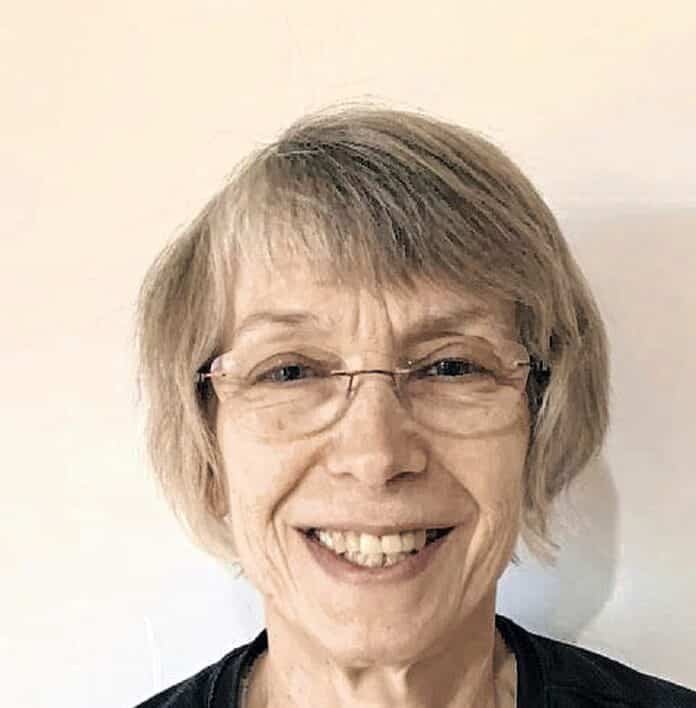On Aug. 26, we celebrate the 100th anniversary of the ratification of the 19th Amendment, granting women the right to vote. Many of the activities and events planned to commemorate this date have been canceled or significantly altered due to the pandemic. This seems ironically appropriate given that the Spanish Flu pandemic of 1918 threatened to derail women’s efforts after the amendment was approved by the House of Representatives. A movement that relied on parades, marches, rallies and conventions suddenly faced public health officials’ calls to halt public gatherings.
Today, we’ve shifted to online meetings, virtual classrooms and teleworking. The suffragists had none of those tools and relied on writing letters and postcards; telephoning people; posting posters and banners; and placing newspaper advertisements. They still needed to get the Senate’s approval and 36 states to ratify the amendment.
They persisted and prevailed.
While many know the stories of the first Women’s Rights Convention in Seneca Falls, N.Y., and events and happenings of the multi-generational push to gain the right to vote, I’d like to point out two lesser-known stories of that effort.
The first is that women didn’t gain the right to vote; they regained it. It’s a little-known historical fact that women voted in the British Colonies and thus, when Abigail Adams asked her husband to “remember the ladies,” she wasn’t asking for something new; she was asking for a continuation of the status quo. Instead, it was left to the states to establish who could and could not vote.
New York stripped women of voting rights in 1777 with Massachusetts following in 1780 and New Hampshire in 1784. New Jersey was the last to fall in 1807 by redefining voters as adult, white, male, taxpaying citizens.
Once a right is lost, it is very difficult to regain. Pushing a boulder downhill is a much easier task than pushing it up that same hill and especially so when there are others standing at a higher level, pushing back against your efforts.
The push for the right to vote required not just leaders, but tens of thousands of foot soldiers in that effort, which brings us to the second little-known story:
Hancock County had suffragists. The Greenfield Franchise League was formed in 1912 at the home of Mary Boyd, just across the street and west from the Riley Home.
From a meager beginning of eight members, it grew until it numbered 113 in 1918.
Unfortunately, that was the year that women in Indiana lost the right to vote, which they’d won earlier through the Maston-McKinley Partial Suffrage Act. That law had granted Hoosier women the right to vote in municipal, school and special elections. The Indiana Supreme Court ruled the law unconstitutional on Oct. 26, 1917, after thousands of Hoosier women had already registered to vote for the first time.
It’s hardly surprising the ranks of the Greenfield Franchise spiked sharply in 1918. Few things boost a movement more than a broken promise.
While Alice Paul’s “radical” group picketed the White House and were attacked, beaten, arrested, imprisoned and oftentimes tortured with tubes shoved down their nostrils to force feed them, Carrie Chapman Catt’s group gently but consistently lobbied President Wilson and other elected officials.
Women in Hancock County seemed to disappear from the effort until one reads archived copies of the newspapers of the day and realizes where they went.
Following the lead of both the traditional and “radical” women parties, they had organized efforts to support the war effort either through Red Cross efforts, selling war bonds, or on their own personal initiative in filling “men’s jobs” that were now unfilled due to the war. At least six women who called Hancock County “home” during their lifetime went even further — to Europe — and assisted both on the front lines as nurses or behind the lines in support occupations.
The Greenfield Franchise League’s core members persisted — meeting despite all their other activities — but their effort was now an attempt to demonstrate through deeds, not words, that women were a critical part of this war effort and worthy of the right to vote. After a nail-biting contest for the 36th state, Tennessee, which was decided by ONE VOTE — by a member who changed his voting intentions after receiving a letter from his pro-suffrage mother — the 19th Amendment became part of our constitution.
On Aug. 26th, let’s remember all the people who worked for and supported the efforts to make our county a little less unequal by passing the 19th Amendment.
A lifelong resident of Hancock County, Linda Dunn is the author of “The Extraordinary Women of Hancock County: Suffragists and Trailblazers.” Send comments to [email protected].




